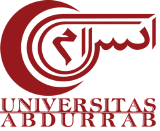Analisis Data Sebaran Bandwidth Menggunakan Algoritma Dbscan Untuk Menentukan Tingkat Kebutuhan Bandwidth Di Kabupaten Purwakarta
Abstrak
Berdasarkan data yang tercatat pada tahun 2018 terdapat 43 organisasi perangkat daerah di kabupaten Purwakarta yang sudah mendapatkan bandwidth internet. Setiap organisasi perangkat daetah yang telah mendapatkan bandwidth mempunyai tingkat kebutuhan yang berbeda – beda ,namun saat ini jumlah pembagian bandwidth dan tingkat kebutuhan belum dapat dikelompokan. Tujuan dari penelitian ini untuk menetukan tingkat kebutuhan bandwidth di Purwakarta dengan cara melakukan analisis data mining terhadap data yang ada menggunakan algoritma DBSCAN sehingga akan terbentuk cluster yang yang dibagi berdasarkan tingkat kebutuhan. Pada penelitian ini metode analisis yang digunakan yaitu SEMMA (Sample, Explore, Modify, Model, Assess) tahapan SEMMA meliputi Data Selection, Pre-processing / cleaning, Transformation, Data Mining dan Assess / Evaluation. Hasil dari analisis menggunakan nilai minpts = 5 dan nilai epsilon = 3. Cluster yang terbentuk yaitu sebanyak 2 cluster, cluster 1 terdapat sebanyak 15 organisasi perangkat daerah dengan tingkat kebutuhan bandwidth rendah dan cluster 2 terdapat 21 organisasi perangkat daerah dengan tingkat kebutuhan bandwidth sedang, dan Noise terdapat 7 organisasi perangkat daerah dengan kebutuhan bandwidth yang terlalu tinggi.
Referensi
Sander, J., Ester, M., Kriegel, H.-P., & Xu, X. (1998). Density-based clustering in spatial databases: The algorithm GDBSCAN and its applications. Int. Journal, Kluwer Academic Publishers.
Turban, E., Aronson, J. ., Liang, T. –., & McCarthy, T. –. (2006). Decision Support Systems, Pearson Education. Decision Support Systems, Pearson Education.
Larose, D. T. (2005). Discovering Knowledge in Data: An Introduction to Data Mining. New Jersey: John Wiley & Sons, Inc.
Azevedo, Santos, A., & F, M. (2008). KDD, SEMMA AND CRISP-DM: A PARALLEL OVERVIEW. IADIS.
Nagpal, P. ., & Mann, P. . (2011). Comparative study if density of based clustering algorithms. American Jurnal of Applications
Prasetyo, E. (2012). Data Mining Konsep dan Aplikasi Menggunakan Matlab. Yogyakarta: ANDI
Arsih, N., Hajarisman, N., & Darwis, S. (n.d.). Metode Pengclusteran Berbasis Densitas Menggunakan Algoritma DBSCAN. Bandung: Prodi Statistika, Fakultas Matematika dan Ilmu Pengetahuan Alam, Universitas Islam Bandung.
Anindya Santika Devi, N.M., Gede Darma Putra, I.K. dan Sukarsa, I.M., 2015. Implementasi Metode Clustering DBSCAN pada Proses Pengambilan Keputusan. Lontar Komputer, 6(3), pp.185–191
lmanuel Ndaumanu, R., Kusrini dan Arief, M.R., 2014. Analisis Prediksi Tingkat Pengunduran Diri Mahasiswa dengan Metode K-Nearest Neighbor. Jatisi, 1(1).
Kusumo, D.S., Bijaksana, M.A. and Darmantoro, D., 2016. DATA MINING DENGAN ALGORITMA APRIORI PADA RDBMS ORACLE. TEKTRIKA - Jurnal Penelitian dan Pengembangan Telekomunikasi, Kendali, Komputer, Elektrik, dan Elektronika, 8(1), pp.1–5
1. Hak cipta dari semua manuskrip jurnal dipegang oleh RABIT: Jurnal Teknologi dan Sistem Informasi Univrab.
2. Ketentuan hukum formal untuk mengakses artikel digital jurnal elektronik tunduk pada ketentuan lisensi Creative Commons Attribution-ShareAlike (CC BY-NC-SA), yang berarti bahwa RABIT: Jurnal Teknologi dan Sistem Informasi Univrab berhak untuk menyimpan, mentransfer media / format, mengelola dalam bentuk basis data, memelihara, dan menerbitkan artikel.
3. Naskah yang diterbitkan baik cetak maupun elektronik adalah akses terbuka untuk tujuan pendidikan, penelitian, dan perpustakaan. Selain itu, dewan editorial tidak bertanggung jawab atas pelanggaran hukum hak cipta.
 PDF
PDF
 Abstrak views: 704
Abstrak views: 704
 downloads: 668
downloads: 668

 :
:












